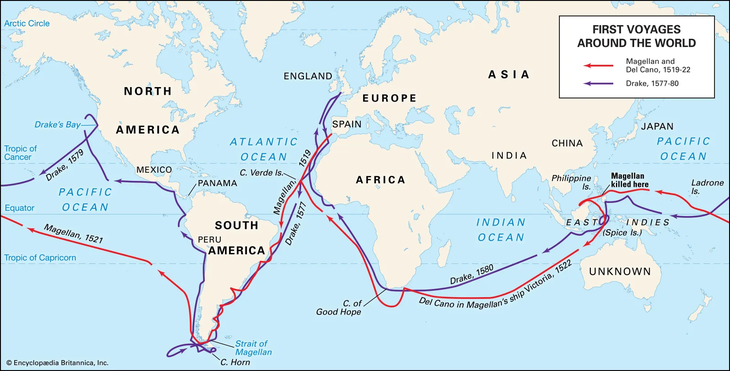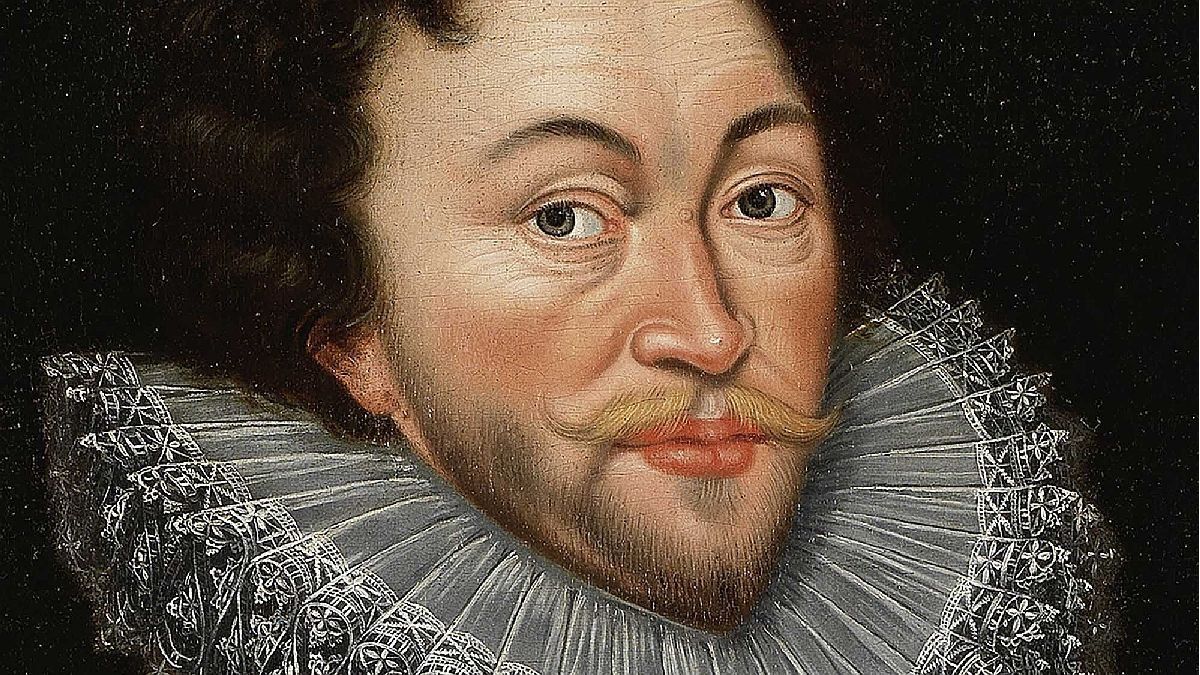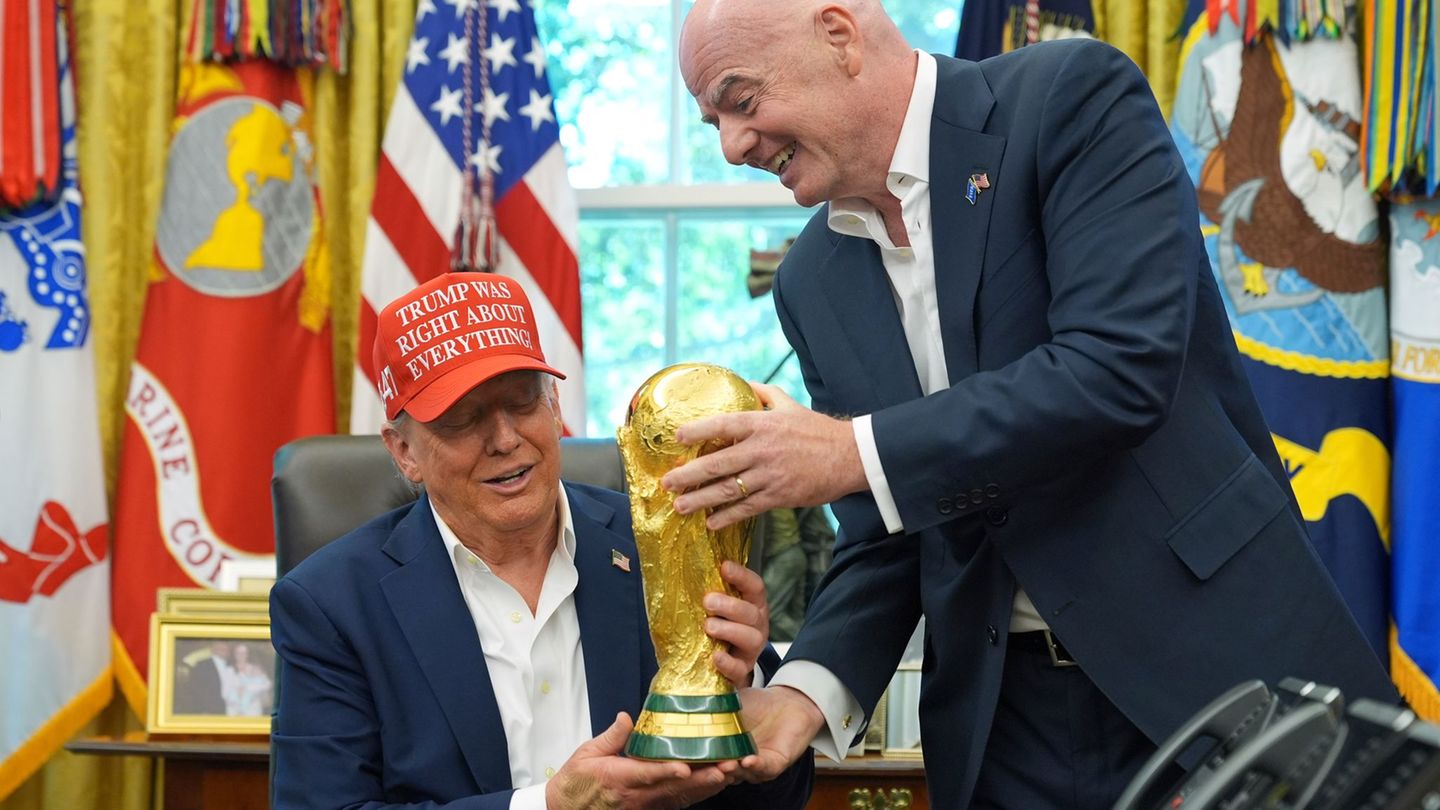Drake wanted to repeat the feat of Magallanes and Elcano that they had undertaken 58 years before. It is usually affirmed that Drake’s was the second circumambulation, although in reality it was the third since, in 1525, barely 4 years after his arrival, the same Juan Sebastian Elcano beside Francisco José García Jofre de Loaisa He left the port of La Coruña to repeat the feat that the same navigator had managed to complete with just 17 survivors.
However, this new venture was so unsuccessful that Elcano died of scurvy and his crew was captured by the Portuguese as they sailed across the Pacific. That is why it is considered a failure… what is not always said is that nine companions of Elcano and Loaisa were released from their captivity and returned to Spain through the Cape of Good Hope, thus completing the world tour for the second time , although in such a rugged way that all chroniclers tend to ignore it.
Drake’s expedition did not get off to a successful start either because bad weather forced him to return to Plymouth, the port from which he had started. For this reason, for many historians, his journey began on December 13.
image.png
For three years they sailed the three oceansthey attacked seven coastal ports in the lands of the empire, they boarded 13 Spanish ships achieving an extraordinary booty of £250,000 (A figure similar to the income of what was collected by the British crown in a year). Some shipowners who provided the funds for this voyage managed to increase their original investment by 5,000%, including Queen Elizabeth, who also officially received the corsair on her ship and knighted him with a seat in Parliament. Drake, in addition to royally compensating the queen’s investment, presented Elizabeth with a precious emerald diadem that she had stolen from a Spanish ship and which is still on display at the Victoria and Albert Museum in London.
But there are still three years left for this glorious return of a single ship, the captain, originally called Pelican and which was baptized as The Golden Hindu during the journey.
Interestingly, the right-hand man of the future Sir Francis was a person of colour, an ex-slave named Diegowhich Drake himself had captured during a raid on Panama. This Diego was fluent in both Spanish and English and served the corsair loyally until his death.
When attacking the ship Santa María (which he renamed Mary when he incorporated it into his fleet) he made off with Spanish maps and a Portuguese pilot, Nino da Silvawho was extremely helpful in accessing ports and sail seas that Drake did not know.
His main problem, in addition to scurvy, storms, small cries, unbearable heat and polar cold, the resistance of the Hispanics, the hostility of the natives and tropical diseases, was the constant opposition of the captain of one of the ships of expedition, thomas doughty who from the beginning opposed the command of “el Draque”, questioned his decisions and accused Sir Francis’ brother of robbery.
The hostility between the men grew, fired by Thomas Drakeand led to the appointment of Doughty as captain of the Susan, the smallest ship of the expedition, an appointment that was considered an insult and unleashed the latter’s open insubordination. Drake accused him of being seditious and Doughty’s brother “of being a witch and a poisoner.”
Arrived at the port of San Julián, in the current Argentine territory, Drake also accused them of treason and the brothers were put on trial.
image.png

The improvised court of sailors sentenced him for mutiny but not for treason. Drake demanded that the death penalty be applied to him as he considered it dangerous for the success of the mission. Curiously, the execution was carried out in the same place where Magellan had finished off the mutineers of his expedition half a century before.
The night before the fatal outcome, Drake and Doughty ate and drank together, toasting the success of the expedition and the long life of the Virgin Queen. The next day Doughty was beheaded…
The voyage continued its course through the treacherous southern seas until the Golden Hind was able to access the Pacific. It is said that Drake was the first Englishman to cross that ocean, which until then was a kind of “Mary nostrum” Hispanic.
In reality, he was not the first Englishman because an artilleryman of British origin had traveled on the Magellan expedition, who was not fortunate enough to complete the trip, but did get to know the Pacific Ocean.
On the coasts of Chile and Peru, “el Draquez” and his family dedicated themselves to doing what they had planned from the beginning, loot the Spanish coastal cities where the English made precious booty.
After sacking Valparaíso, Drake captured several Spanish ships, including Nuestra Señora de la Concepción, from which he took 36 kilos of gold and 26,000 kilos of silver, as well as precious stones. It is estimated that in today’s currency they would be equivalent to 10 million dollars.
Curiously, after taking possession of the ship, the Englishman invited the officers and nobles to a dinner where they all chatted happily and shortly after he released them with a safe-conduct so that they could return to their country of origin unmolested.
On the island of Mocha they were attacked by the Mapuches who managed to wound Drake and Diego and capture two other crew members. Diego never fully recovered from his injuries and months later he passed away.
To avoid encounters with hostile ships, the expedition sailed north and reached California, which it took possession of for England under the name of New Albion.
From California they sailed at moluccas islandsknown as the “islands of spices”, highly requested additions –and well paid– in European cuisine because they hid the rancid taste of the meats that they were sometimes forced to eat.
With the ship loaded with riches, Drake was not willing to get involved in new battles, his priority was to return to England and for this reason they went to the Cape of Good Hopecoasting African territory.
As they approached England, doubts began to assail both Drake and the 59 men who had survived these 3 years of adventures and anxieties, of discovering a new world, of sailing unknown seas, having contact with new civilizations alien to their customs and meet exotic animals, unknown as those “birds that could not fly”the penguins that inhabited the southern seas.
Now the question that tormented them was: how would they be received? Were they heroes or was an arrest warrant hanging over their heads as surely the Spanish had requested? Would Elizabeth continue to reign, or had Mary, Queen of Scots, ascended the throne?
Doubts were cleared up when they came across some English fishermen who were astonished at the return alive of Drake and his family, whom many Englishmen considered dead. They were happy to know that Isabel was still queen and who personally went to Plymouth to receive Francis Drakewhom he proclaimed a knight, a pirate knight who had sown panic and destruction on the other side of the world by looting Spanish possessions.
image.png

Drake had returned to England with an extraordinary booty capable of buying any reprieve and forgiving all excesses such as Doughty’s death. His success and the riches obtained from him pushed the greed of his contemporaries who set out to pillage the seas with the blessing of the crown. Through letters of marque, England made up for the lack of a fleet that it was unable to support.
That was how characters like Ralph Fitch, Walter Raleigh and James Lancaster they set out to conquer distant lands (the latter created the East India Company).
while the king Philip II Spain requested the capture and punishment of the English pirate, he was protected by the queen, but the failure of other entrusted missions earned him the royal antipathy. After seven years on land, he was given another mission to harass the Spanish colonies. He knew it was the last chance he had to rehabilitate himself in Isabel’s eyes, but his campaign was a failure. He died of dysentery and his body is said to have been thrown into the sea at a place called “Name of God”, name that Drake, the pirate, invoked more than once in vain during his outrages.
image.png

Source: Ambito
David William is a talented author who has made a name for himself in the world of writing. He is a professional author who writes on a wide range of topics, from general interest to opinion news. David is currently working as a writer at 24 hours worlds where he brings his unique perspective and in-depth research to his articles, making them both informative and engaging.




